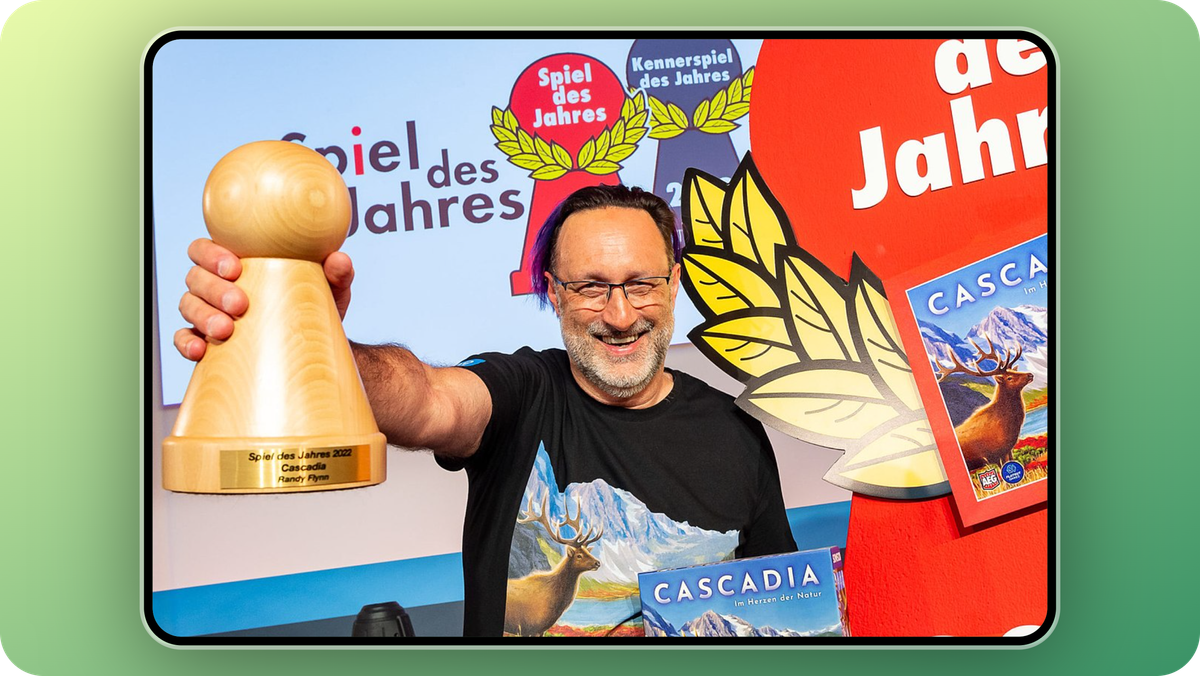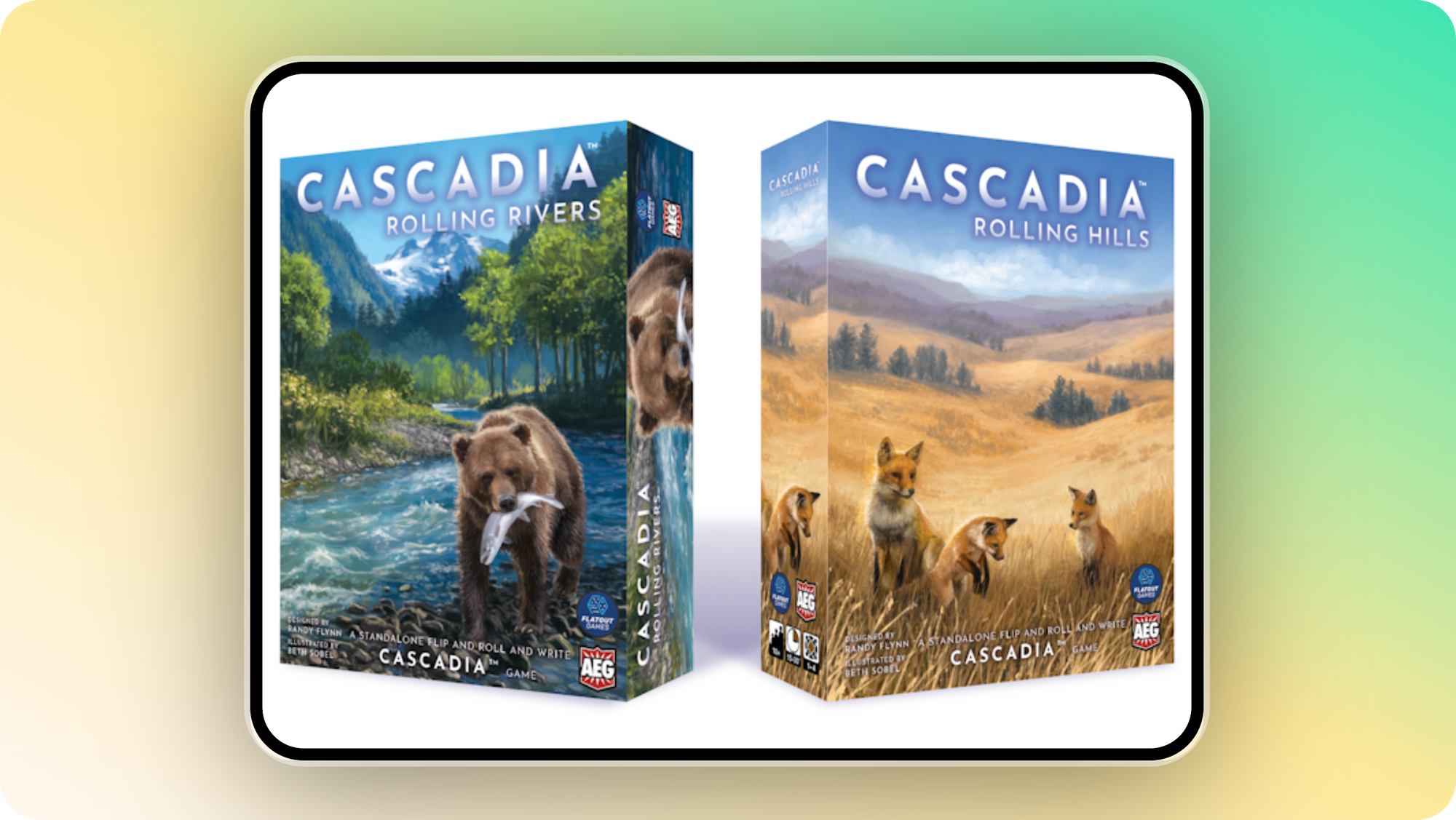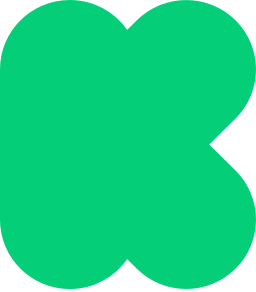The Secrets to Creating Award-Winning Kickstarter Campaigns
The anatomy of a winning campaign featuring a special creator spotlight on Flatout Games.

Kickstarter has emerged as a successful launchpad for many creative projects. It's remarkable how crowdfunding has enabled creators to achieve new heights, with several projects receiving Academy Award nominations, Grammy nominations, Pulitzer Prizes, and even becoming globally recognized brand names. We take immense pride in this fact.
If you're planning to launch your own Kickstarter campaign, you've come to the right place. We'll reveal all the secrets you need to create an award-winning Kickstarter campaign, including the art of crafting a compelling and successful campaign. We'll also provide tips on how to promote your campaign for success and build anticipation before launch.
So, whether you're a newcomer to Kickstarter or an experienced campaigner, we've got you covered. Let's get started and help you achieve success with your next project!
Plus, we'll feature a special creator spotlight on Flatout Games, the first crowdfunded game to win the prestigious Spiel des Jahres award for their game Cascadia. So, whether you're a first-time creator or a seasoned pro, this blog post has something for everyone. So what are you waiting for? Let's get started!
The Anatomy of a Winning Kickstarter Campaign
A successful Kickstarter campaign is the result of careful planning, creativity, and effective execution. While there is no one-size-fits-all formula, certain key elements can significantly increase your chances of success.
1. A clear and concise project description
Your project description is the foundation of your Kickstarter campaign. It should clearly and concisely explain your project's purpose, its uniqueness, and why people should back it. Be sure to highlight the problem your project solves, the benefits it offers, and the impact it will have.
2. A realistic and achievable funding goal
Setting a realistic funding goal is crucial to the success of your campaign. While it is tempting to set a high goal, it is important to be realistic about what you can actually achieve. A well-thought-out budget and a thorough understanding of your target audience will help you determine a funding goal that is both ambitious and attainable.
3. An engaging and visually appealing campaign page:
Your campaign page is your online business card, and it needs to be visually appealing and engaging to attract potential backers. Use high-quality images, videos, and graphics to showcase your project and capture the attention of visitors. Make sure your page is well-organized and easy to navigate, with clear calls to action that encourage visitors to support your campaign.
4. A well-structured and persuasive rewards system:
Rewards are an essential part of any Kickstarter campaign, as they incentivize people to support your project. Your rewards should be attractive, relevant to your project, and offered at different tiers to accommodate a range of budgets. Be creative and think outside the box when designing your rewards, and make sure they are clearly presented and explained on your campaign page.
5. An effective marketing and promotion strategy:
Once your campaign is live, it is important to have a solid marketing and promotion strategy in place. This includes promoting your campaign on social media, reaching out to influencers and journalists, and running paid advertising campaigns. The key is to get the word out about your project and generate excitement among potential backers.
By incorporating these key elements into your Kickstarter campaign, you can significantly increase your chances of success. Remember, crowdfunding is a community-based endeavor, so engage with your backers, build relationships, and show your appreciation for their support.
How to Build Anticipation Before Launch
Building anticipation before launching your Kickstarter campaign is crucial for generating excitement and momentum. Here are some effective strategies to help you create a buzz and build a strong community of backers:
Create a Strong Community on Social Media: Establish a presence on various social media platforms where your target audience is active. Regularly share updates, behind-the-scenes glimpses, and interesting content related to your project. Engage with your audience by responding to comments, questions, and messages. Building a strong social media community will help you connect with potential backers and keep them engaged throughout the campaign.
Release Sneak Peeks and Teasers: Share exclusive sneak peeks, concept art, or short videos to give your audience a taste of what's to come. These teasers will generate curiosity and excitement, making your project stand out even before the official launch.
Offer Early Bird Discounts or Incentives: Provide special incentives or early bird discounts to encourage potential backers to pledge their support early on, preferably in the first 24-48 hours of your campaign launch. This creates a sense of urgency and motivates individuals to commit to your project before the campaign goes live.
Collaborate with Influencers and Content Creators: Partner with influencers, bloggers, or content creators who align with your project's theme or target audience. Their endorsement and promotion can significantly boost your campaign's visibility and credibility.
Implementing these strategies can build anticipation, generate excitement, and attract potential backers even before your Kickstarter campaign officially launches. A well-executed pre-launch strategy will set the stage for a successful crowdfunding campaign.

Creator Spotlight: Flatout Games, Winner of the Spiel Des Jahres Award for Their Game Cascadia— The First Crowdfunded Game to Win This Award
In this section, we'll shine the spotlight on Flatout Games, the brilliant minds behind Cascadia, the first crowdfunded game to receive the prestigious Spiel des Jahres award. Their remarkable journey to success serves as a beacon of inspiration for aspiring creators seeking to conquer the crowdfunding landscape.
Flatout Games masterfully crafted Cascadia, a captivating board game that seamlessly blends strategy and nature, inviting players to construct diverse ecosystems while competing for victory. Cascadia's allure lies in its intricate gameplay, stunning artwork, and educational value, making it a well-rounded package that resonates with players of all backgrounds.
Can you share your journey from the inception of Cascadia to winning the prestigious Spiel des Jahres award? What inspired the game's concept and design?
Randy Flynn has been a great friend of the Flatout Games CoLab for many years and when we were working on Calico, our first game, he was one of the early playtesters of the game. While we were working on Calico, Randy was inspired to create his own hex-based puzzle game and the team had the opportunity to play some of his early concepts for a 'dual-layer hex puzzle game'. It was originally called 'Lands and Creatures', so it always had the land and animals theme. When we decided to publish it as our second game, Flatout Games formed a CoLab, or collaborative group of folks to work on the game together. Randy, along with Kevin Russ (designer/developer), David Iezzi (designer/developer), Dylan Mangini (developer/graphic designer), Beth Sobel (illustrator), Shawn Stankewich (designer/developer/publisher), Molly Johnson (designer/developer/publisher), and Robert Melvin (designer/developer/publisher) teamed up to create the game. The theme for Cascadia came after brainstorming a way to differentiate the game from other generic 'nature' themes and as a love letter to the wilderness in our own backyards. The game went through many mechanical and product-related changes. The team focused on streamlining the game and providing an experience that was easy to get into for new players, but had layers of depth for seasoned gamers, not unlike our first game, Calico.
Describe the moment you found out Cascadia had won the Spiel des Jahres award. How did it feel to achieve such a prestigious recognition for a crowdfunded game?
It was pretty surreal. When we found out we were nominated we were really excited and Randy and Molly traveled to Germany for the ceremony, but they had no idea who had won until it was announced at the ceremony. The whole team was pretty floored by it. We have to thank our partners in Alderac Entertainment Group (our retail distribution partner publisher) and KOSMOS (our German language partner for Cascadia) for their amazing support and direction in getting our game into the running for the award.
We all believed that Cascadia was the kind of game that could win an award like the Spiel des Jahres, but it takes a lot of people working really hard to put together a product that is at the quality level needed for consideration. It was a wonderful team effort that started with Kickstarter and our thousands of backers, through our collaborators, and out into the hands of the public!
Winning the Spiel des Jahres requires innovation, creativity, and engaging gameplay. Can you share any insights or approaches you believe were pivotal in making Cascadia stand out to the award jury?
This is such a tough question! There are so many different games that win the award, so it's hard to know exactly what the jury might be looking for in any given year. But one thing that the games have in common is that they are lovingly crafted with attention to every detail. Sometimes when folks ask us for advice on how to make games or how to launch a successful campaign, our response is to do as much research as you can, immerse yourself in the community and find the things that you really love and ask yourself why. Become observant of how others in the space do things and reach out to people you admire to chat about it. It's a remarkable community! Also, remember that games are products and they need just as much attention on the product design side as they do on the mechanical design side.
Other creators will see this story and will want to proceed with submitting their crowdfunded project to an award of some kind, what advice, tips, or tactics would you share with them?
It's a great idea to submit your game for award consideration, but shouldn't be a driver of what you're doing. The goal should always be to create a unique experience, and most of the awards/accolades will follow once people start playing your game and talking about it. When you do get the opportunity to submit for awards, it is a great opportunity to give your game another marketing moment to help extend its life.

